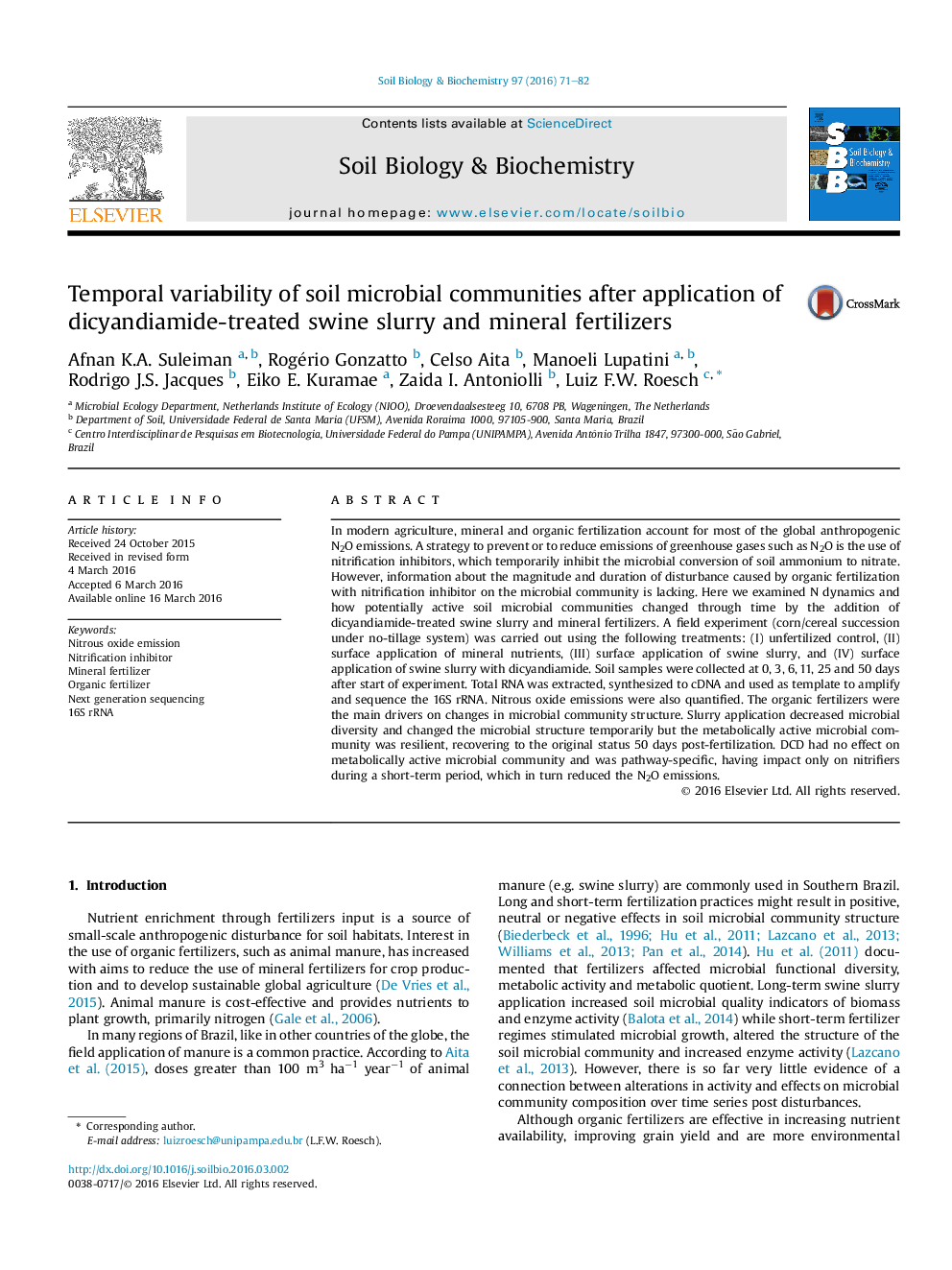| Article ID | Journal | Published Year | Pages | File Type |
|---|---|---|---|---|
| 2024321 | Soil Biology and Biochemistry | 2016 | 12 Pages |
•The use of dicyandiamide does not change the overall microbial community structure.•Dicyandiamide inhibit specific groups of microorganisms at genus level.•Slurry application decreases microbial diversity and changes the community structure.•Microbial community recovers to its original status after swine slurry application.
In modern agriculture, mineral and organic fertilization account for most of the global anthropogenic N2O emissions. A strategy to prevent or to reduce emissions of greenhouse gases such as N2O is the use of nitrification inhibitors, which temporarily inhibit the microbial conversion of soil ammonium to nitrate. However, information about the magnitude and duration of disturbance caused by organic fertilization with nitrification inhibitor on the microbial community is lacking. Here we examined N dynamics and how potentially active soil microbial communities changed through time by the addition of dicyandiamide-treated swine slurry and mineral fertilizers. A field experiment (corn/cereal succession under no-tillage system) was carried out using the following treatments: (I) unfertilized control, (II) surface application of mineral nutrients, (III) surface application of swine slurry, and (IV) surface application of swine slurry with dicyandiamide. Soil samples were collected at 0, 3, 6, 11, 25 and 50 days after start of experiment. Total RNA was extracted, synthesized to cDNA and used as template to amplify and sequence the 16S rRNA. Nitrous oxide emissions were also quantified. The organic fertilizers were the main drivers on changes in microbial community structure. Slurry application decreased microbial diversity and changed the microbial structure temporarily but the metabolically active microbial community was resilient, recovering to the original status 50 days post-fertilization. DCD had no effect on metabolically active microbial community and was pathway-specific, having impact only on nitrifiers during a short-term period, which in turn reduced the N2O emissions.
